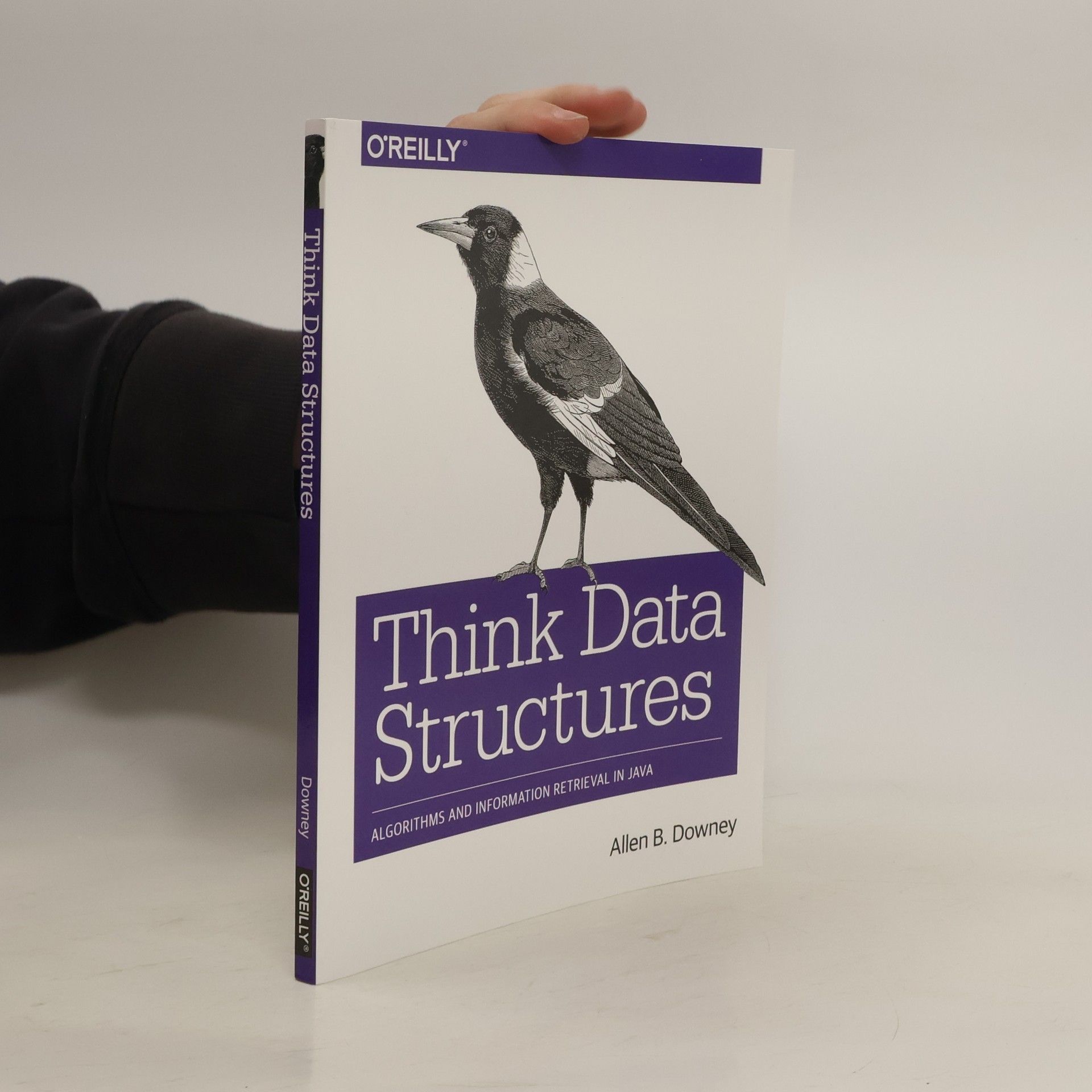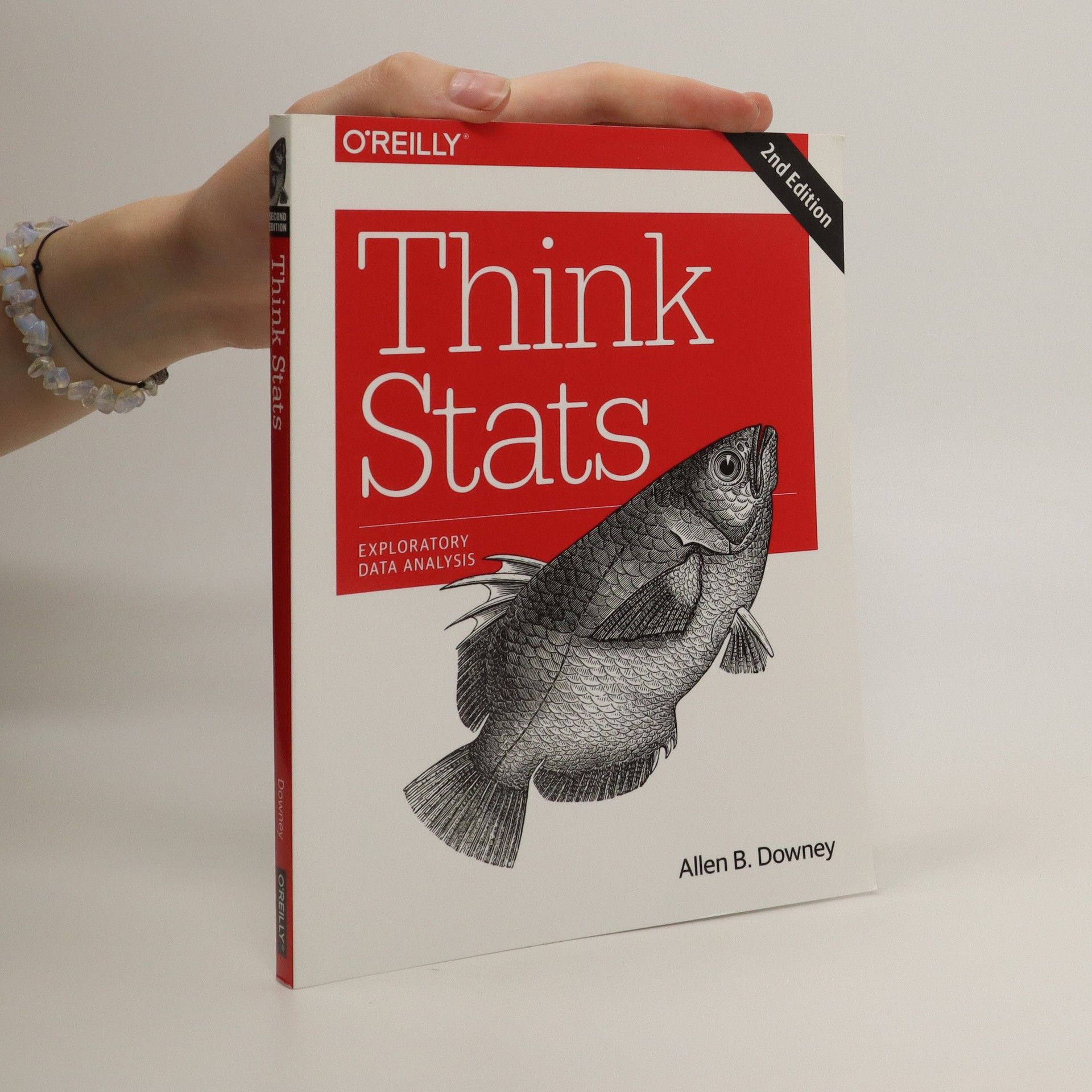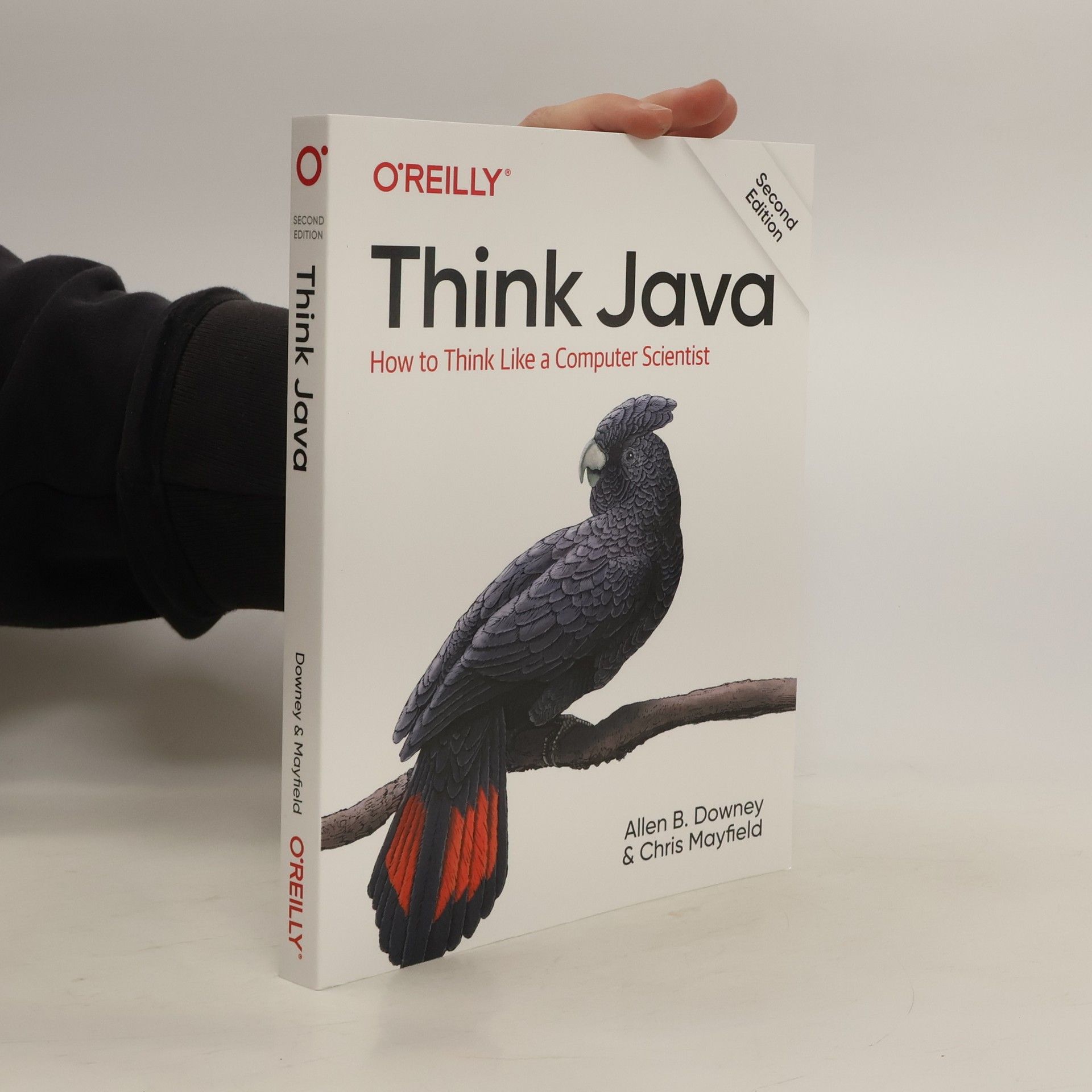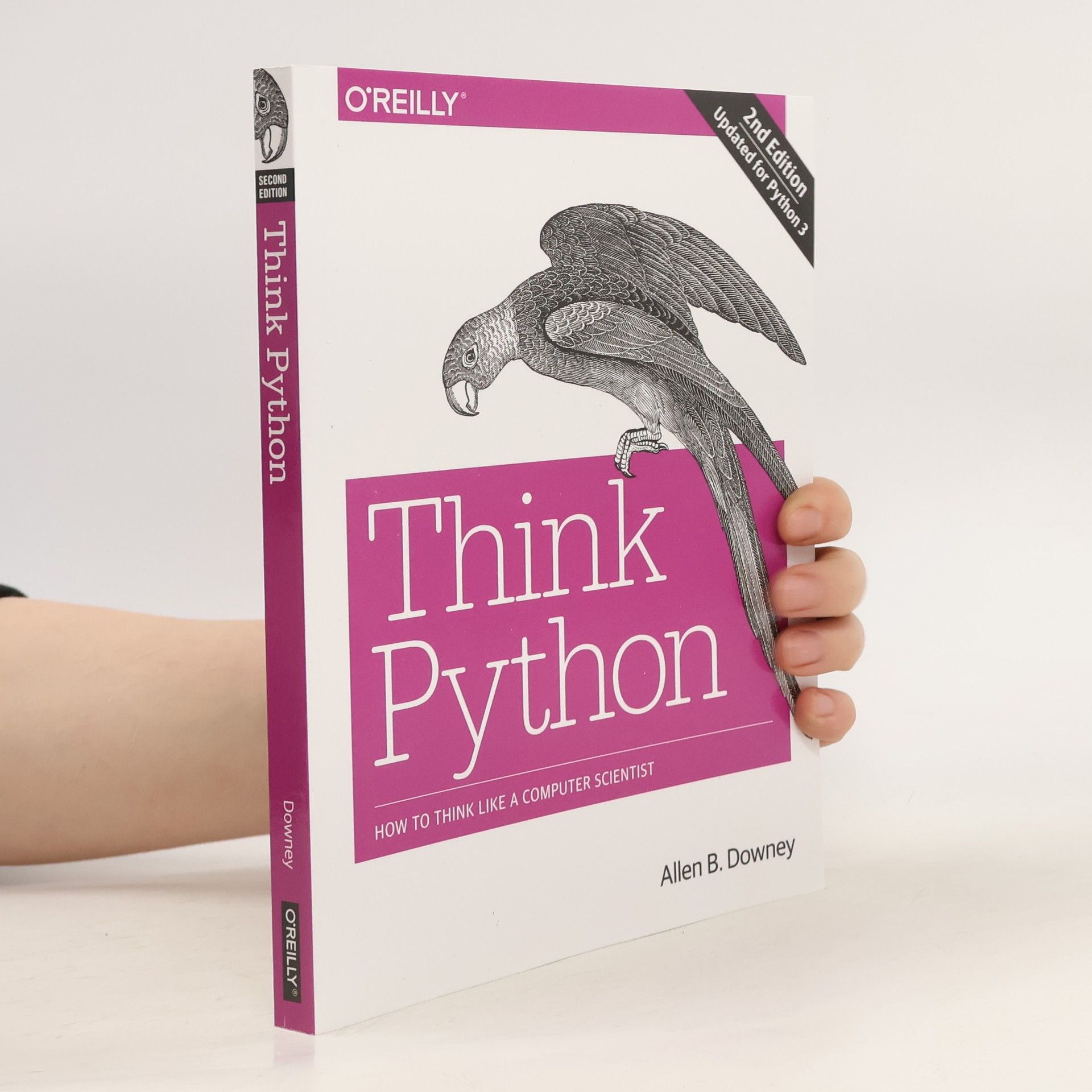"Teacher, data scientist, and blogger Allen B. Downey knows well that the human mind has both an innate ability to understand statistics and to be fooled by them. Statistically speaking, you will be less popular than your friends, arrive at a train station during a gap in service, and fail to find a running mate in a race. But more than surprising us, errors in statistical thinking, Downey shows, can have a huge impact. Statistical confusion has led to incorrect patient prognoses, caused mistakes in predicting disasters like earthquakes, hurt vaccination programs, hindered social justice efforts, and led to dubious policy decisions. Written for those who may have once taken a statistics course, but now forget almost everything they've learned, the book includes a diversity of examples that use real data and have real world impacts. Building understanding incrementally, Downey engagingly and accessibly helps readers understand what we might learn when we get the mathematics right, and the consequences when we get it all wrong"--
Allen B. Downey Boeken
Allen Downey is een professor informatica wiens werk zich verdiept in de wereld van software en datawetenschap. Zijn geschriften verkennen regelmatig thema's van bayesiaanse kansrekening en statistiek, vaak tentoongesteld op zijn blog. Downey staat bekend om zijn open-source leerboeken die gericht zijn op het bieden van praktisch begrip van complexe onderwerpen.






Think Python
- 222bladzijden
- 8 uur lezen
If you want to learn how to program, working with Python is an excellent way to start. This hands-on guide takes you through the language a step at a time, beginning with basic programming concepts before moving on to functions, recursion, data structures, and object-oriented design. This second edition and its supporting code have been updated for Python 3. Through exercises in each chapter, you’ll try out programming concepts as you learn them. Think Python is ideal for students at the high school or college level, as well as self-learners, home-schooled students, and professionals who need to learn programming basics. Beginners just getting their feet wet will learn how to start with Python in a browser. Start with the basics, including language syntax and semantics Get a clear definition of each programming concept Learn about values, variables, statements, functions, and data structures in a logical progression Discover how to work with files and databases Understand objects, methods, and object-oriented programming Use debugging techniques to fix syntax, runtime, and semantic errors Explore interface design, data structures, and GUI-based programs through case studies
Modeling and Simulation in Python teaches readers how to analyze real-world scenarios using the Python programming language, requiring no more than a background in high school math. Modeling and Simulation in Python is a thorough but easy-to-follow introduction to physical modeling—that is, the art of describing and simulating real-world systems. Readers are guided through modeling things like world population growth, infectious disease, bungee jumping, baseball flight trajectories, celestial mechanics, and more while simultaneously developing a strong understanding of fundamental programming concepts like loops, vectors, and functions. Clear and concise, with a focus on learning by doing, the author spares the reader abstract, theoretical complexities and gets right to hands-on examples that show how to produce useful models and simulations.
Think Java
- 326bladzijden
- 12 uur lezen
Think Java is a hands-on introduction to computer science and programming used by many universities and high schools around the world. Its conciseness, emphasis on vocabulary, and informal tone make it particularly appealing for readers with little or no experience.
Think Stats
- 226bladzijden
- 8 uur lezen
Teaches the entire exploratory data analysis process using a single case study.
Think Data Structures
- 158bladzijden
- 6 uur lezen
If you're a student studying computer science or a software developer preparing for technical interviews, this practical book will help you learn and review some of the most important ideas in software engineering-data structures and algorithms-in a way that's clearer, more concise, and more engaging than other materials.
Python lernen mit KI-Tools
Einstieg in die Programmierung mit KI-Unterstützung
- 360bladzijden
- 13 uur lezen
Eine der ersten Einführungen in die Programmierung, die virtuelle Assistenten wie ChatGPT (LLMs) aktiv und didaktisch durchdacht für einen besseren Lernerfolg nutzt Die Übungsaufgaben werden mit ChatGPT gelöst und dabei auch der Einsatz von KI-Assistenten als Hilfsmittel für die Programmierung gezeigt Inklusive Prompting, Testen von Code und Debugging mit LLMs Als Lernumgebung werden Jupyter Notebooks genutzt Leichter lernen mit KI-Assistenzen: Wenn Sie mit dem Programmieren beginnen wollen, eignet sich Python hervorragend für den Einstieg. Dieser abwechslungsreiche Praxiskurs führt Sie Schritt für Schritt in die Sprache ein, beginnend mit grundlegenden Programmierkonzepten, über Funktionen, Syntax und Semantik, Rekursion und Datenstrukturen bis hin zu objektorientiertem Design. Für die Übungen nutzt Allen Downey LLMs wie ChatGPT, mit denen der Lernprozess beschleunigt werden kann. Er zeigt Ihnen auch, wie Sie diese KI-Tools verwenden, um die Programmierung in der Praxis zu vereinfachen - z.B. durch effektives Prompting, dem Testen Ihres Codes und der Fehlersuche. Die Kapitel enthalten zahlreiche Übungen, bei denen die KI zum Einsatz kommt, sowie ein Glossar der Fachbegriffe, Fallstudien, kurze Verständnistests und kleinere Projekte in Jupyter Notebooks, an denen Sie die neu erlernten Programmierkonzepte gleich ausprobieren können. Auf diese Weise wenden Sie das Gelernte direkt an, festigen Ihr Verständnis für die konkrete Programmierpraxis und erfahren zudem, wie künstliche Intelligenz Sie auch zukünftig im Programmieralltag unterstützen kann.
Java jest językiem dojrzałym i jednocześnie bardzo nowoczesnym. Skupiona wokół niego społeczność cały czas dynamicznie go rozwija, sprawiając, że wszechstronność i innowacyjność Javy budzi podziw. Jest to też język idealny do nauki programowania - początkujący programiści, którzy wybierają Javę jako swój pierwszy język, w naturalny sposób nabierają dobrych nawyków, dzięki czemu później stosowanie się do najlepszych praktyk programistycznych nie sprawia im problemu. Ważne jest tylko, aby wraz z nauką programowania adept sztuki tworzenia kodu przyswoił choćby najważniejsze prawidła informatyki. Pozwala to uniknąć w przyszłości wielu kłopotów z niewydajnym, niezrozumiałym i trudnym do utrzymania kodem. Oto zaktualizowane i uzupełnione wydanie znakomitego podręcznika dla początkujących, dzięki któremu zdobędziesz solidne podstawy informatyki i programowania w Javie. Wyjaśniono tu szereg skomplikowanych tematów, rozłożonych na mniejsze zagadnienia, z których każde zostało opatrzone zrozumiałymi przykładami. Książka zawiera mnóstwo ćwiczeń, które sprawią, że zaczniesz kreatywnie podchodzić do programowania, a odkrywanie relacji między danymi wejścia i wyjścia, klasami, metodami i obiektami przyniesie Ci prawdziwą satysfakcję. Duży nacisk położono na właściwe słownictwo i... właśnie tworzenie programów. Zapoznasz się więc z różnymi strategiami projektowania, pisania, testowania i debugowania programów. Liczne przykłady kodu, ćwiczenia, podsumowania, porady i wskazówki stanowią wspaniałe uzupełnienie prezentowanych treści. W tej książce między innymi: podstawowe koncepcje programowania zmienne, wartości, zarządzanie pamięcią, operacje wejścia-wyjścia operacje logiczne, pętle i referencje obiekty, tablice, klasy i ich projektowanie konstruktory, interfejsy, detektory zdarzeń
